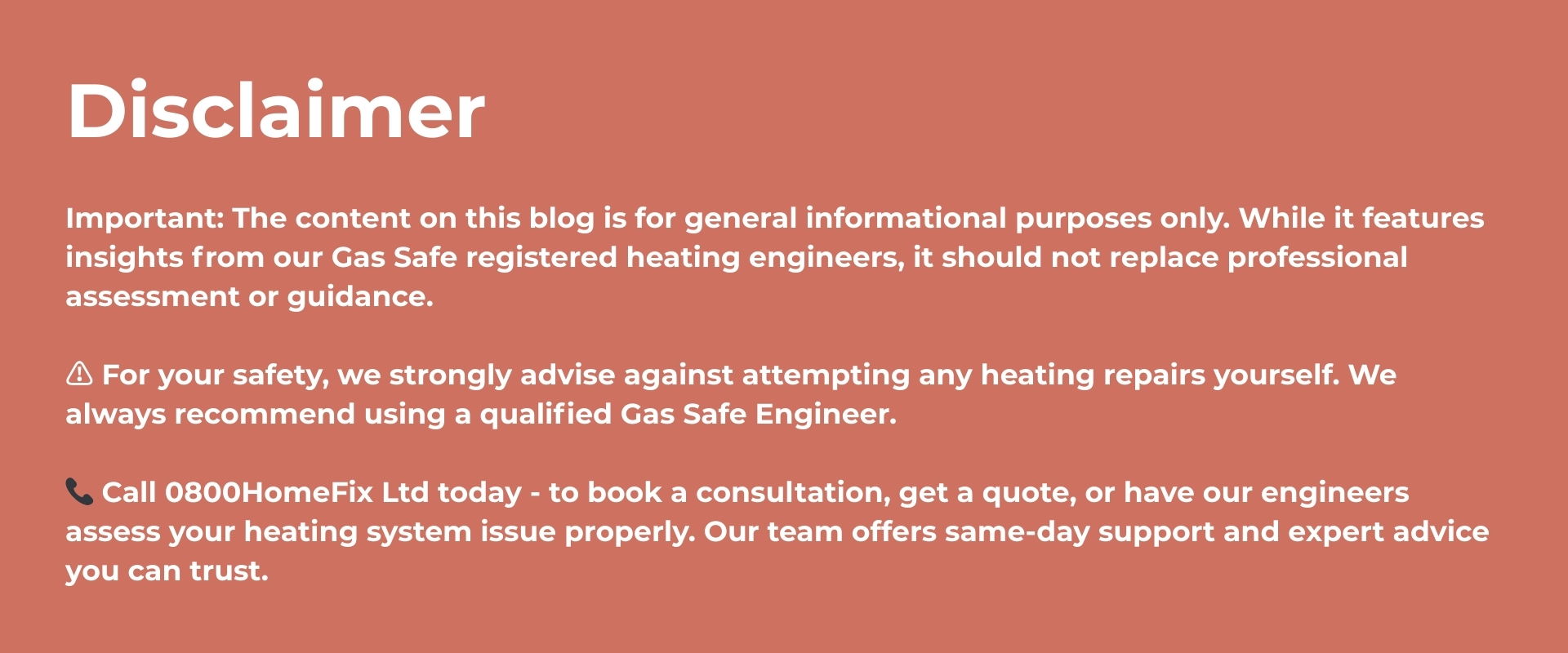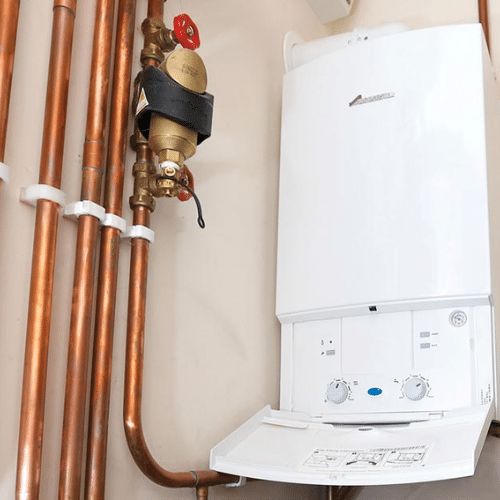

Many Worcester boilers use an internal filling key to top up water pressure in the central heating system. However, modern Worcester boilers often do not require a key for repressurising, unlike older models. But what happens when you don’t have the key or your model doesn’t use one? Don’t worry – increasing boiler pressure on a Worcester system without a key is absolutely possible and safe, provided you follow the right steps.
In this guide, 0800 Homefix explains how to safely increase boiler pressure on a keyless Worcester Bosch boiler using simple steps that homeowners can follow, and how to tell if there’s a bigger issue you shouldn’t ignore.
Why Boiler Pressure Matters
Boiler pressure is crucial for the efficient operation of your central heating system. Maintaining the correct pressure is essential for your boiler’s efficiency and to ensure it functions optimally. If your pressure drops below 1.0 bar, your system may fail to heat properly or may even shut down entirely. Maintaining the ideal pressure range – between 1.3 to 1.5 bar which ensures optimal performance and the right pressure for your system.
How to Check If You Have a Keyless Boiler
Many newer Worcester Bosch models, such as those in the Greenstar i and Greenstar 8000 Lifestyle range, come with an external filling loop or a blue lever (keyless filling link) instead of the older internal key mechanism. Some older Worcester boilers use an internal filling loop operated with a white plastic key to manually open the valve and introduce cold water to increase pressure.
Check under your boiler:
- If you see a blue lever or tap, you likely have a keyless filling system.
- If you see two taps and a silver braided hose, you have a manual filling loop.
- Some systems may have a white square handle, which is used to control cold water flow and can affect system pressure.
Step-by-Step: Increase Pressure Without a Key
Step 1: Turn Off Your Boiler
Make sure the boiler is off and cool before adjusting the pressure. This ensures safety and gives you a more accurate reading on the pressure gauge.
Step 2: Locate the Pressure Gauge
Look for the dial, typically located on the front panel. Note the current pressure – anything under 1.0 bar is considered low.
Step 3: Identify the Filling Loop or Blue Lever
- For keyless models, the blue lever or tap is your pressure top-up tool.
- For manual external loops, you’ll have two black or blue valves connected to a silver hose.
Step 4: Open the Filling Mechanism
- For keyless models: Gently pull down or turn the blue lever. You should hear water entering the system.
- For manual filling loop: Slowly open both valves and keep an eye on the gauge.
Step 5: Stop at 1.3–1.5 Bar
Once the gauge reaches between 1.3 and 1.5 bar, turn the lever back to the off position (or close the two valves).
Step 6: Turn the Boiler Back On
Reset your boiler if necessary and check that everything is functioning correctly.
What If Pressure Still Keeps Dropping?
If you’re topping up your pressure more than once every few months, it’s a sign that something is wrong.
Common causes include:
- Leaks in the system (leaks can lead to further issues such as pressure drops and system inefficiency)
- A faulty pressure relief valve
- Expansion vessel issues
- Air trapped in radiators
Don’t keep refilling the system. Call a Gas Safe registered engineer from 0800 Homefix to diagnose and fix the issue properly. If the problem persists, it’s best to contact a qualified heating engineer who can identify the root causes and prevent further issues.
Worcester Boiler Error Codes Related to Pressure
If you’re seeing any of these codes, low pressure might be the culprit:
- A1: Low water content
- EA: Flame not detected (sometimes linked to pressure)
- C4: System water pressure too low
- EA 227: Flame detection fault
These can often be resolved with a simple pressure top-up, but if the code persists, seek expert help.
When to Call 0800 Homefix
Topping up your boiler pressure without a key is usually simple. But call us if:
- You can’t locate the filling mechanism
- The pressure drops again after topping up
- You hear gurgling or knocking sounds in the system
- You see repeated error codes or cold radiators
We offer same-day diagnostics and boiler repair services across London. Our Gas Safe engineers are trained in all Worcester Bosch models.
FAQs
Can I increase pressure while the boiler is running?
No. Turn off the boiler and let it cool first.
Is using the blue lever safe?
Yes, it’s designed for easy, tool-free pressure top-ups.
How often should I top up my Worcester boiler pressure?
Only every few months, if that. Frequent top-ups indicate a problem.
What if I overfill it?
Bleed a radiator to release excess pressure. Use a radiator key to open the radiator valve and let out some water until the pressure returns to normal. Don’t try to drain the boiler yourself.
What if my hot water isn’t working after repressurising?
Low boiler pressure can affect hot water flow and temperature. If your hot water isn’t working properly after repressurising, check the pressure gauge and ensure it’s within the recommended range. Persistent issues may indicate a deeper problem with your heating system.
When should I consider a new boiler?
If you experience persistent pressure issues, frequent repairs, or your boiler is old and inefficient, it may be time to consider a new boiler. Upgrading can improve heating efficiency and help avoid larger, costly problems in the future.
Need Help? Contact 0800 Homefix
Whether your boiler uses a key or a lever, the team at 0800 Homefix can help. If your Worcester boiler keeps losing pressure or you’re seeing flashing fault codes, let our Gas Safe engineers sort it out quickly and safely.
Call us today or book online for expert boiler care you can count on.

